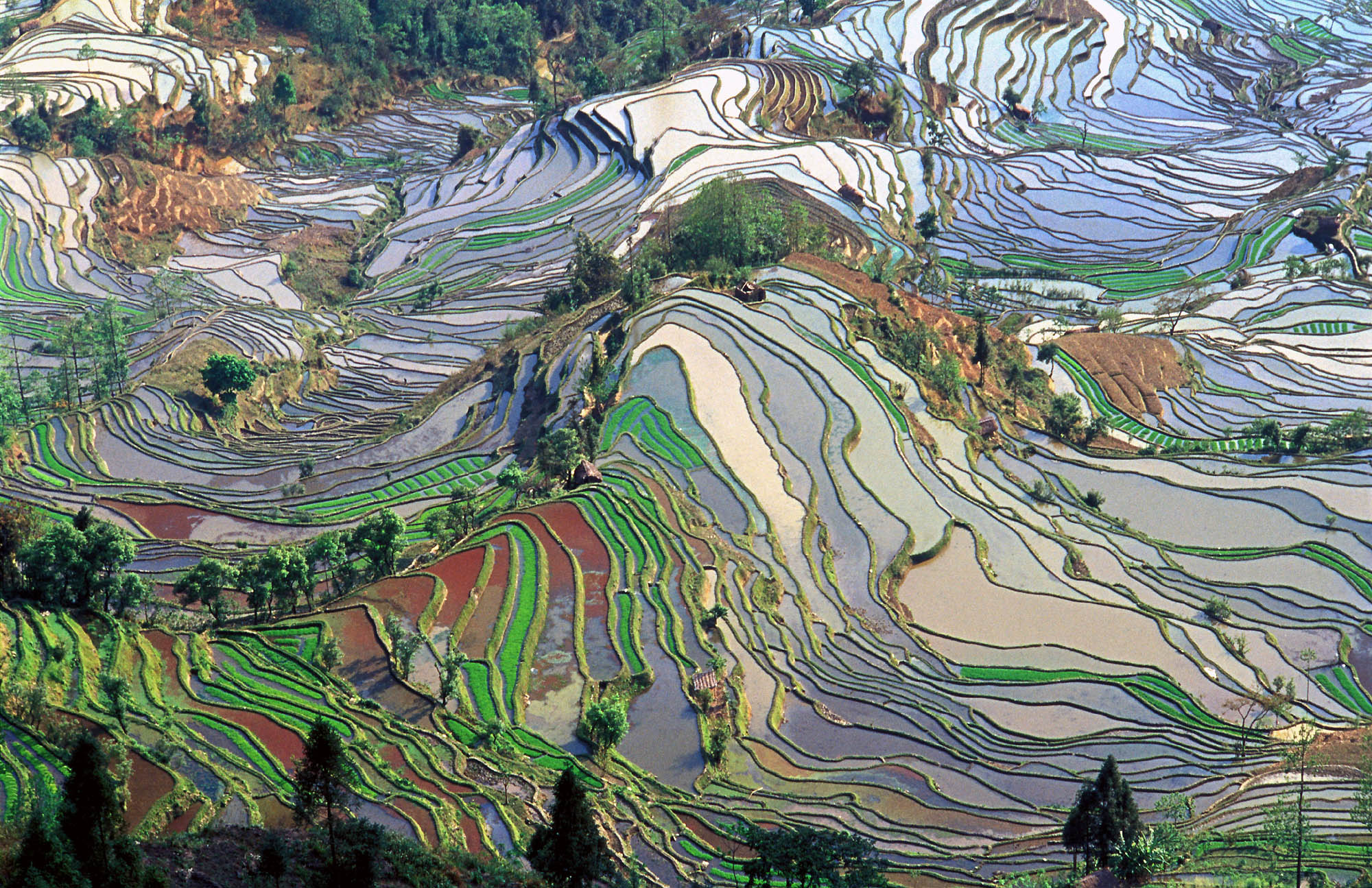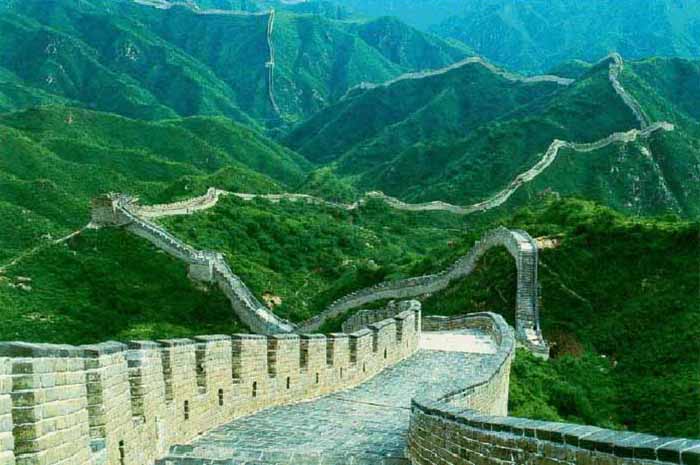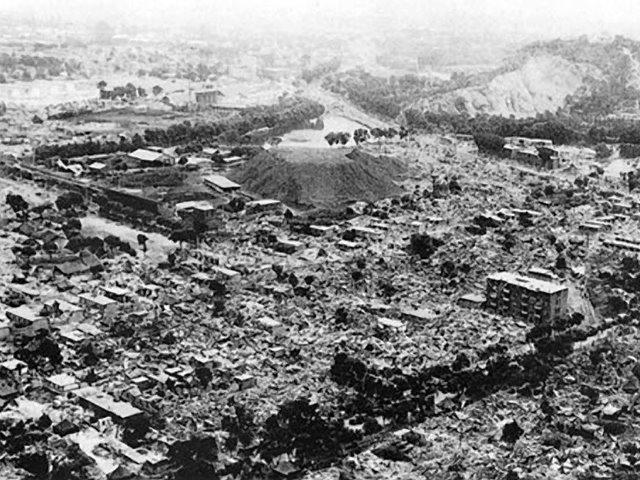the origin of the name ‘China’derived from the name of the feudal state of Ch’in.written as Qin
Han dynasty (221 B.C. to A.D. 221)
Han dynasty (221 B.C. to A.D. 221)
Han dynasty (221 B.C. to A.D. 221)
Under this short-lived dynasty of Ch’in and the famous Han dynasty (221 B.C. to A.D. 221) which followed it, the Empire expanded until it embraced almost all the territory now known as China Proper
Southern Sung dynasty (1127–1280)
Tartars
China countries and islands, acquired and lost during the long course of Chinese history (at one time, from 73 to 48 B.C., “all Asia from Japan to the Caspian Sea was tributary to the Middle Kingdom,” i.e. China)
During the Southern Sung dynasty (1127–1280) the Tartars owned the northern half of China, as far down as the Yangtzŭ River, and in the Yüan dynasty (1280–1368) they conquered the whole country.
Expansion of Races from North to South
The STORY southern origin ( implies a gradual infiltration
of Chinese immigrants through South or Mid-China d) toward the north, but there is little doubt that the
movement of the races has been from north to south and not vice versa.

In what are now the provinces of Western Kansu and Ssŭch’uan there lived a people related to the Chinese (as who moved into the present territory of Tibet and are known as Tibetans; in what is now the province of Yünnan were the Shan or Ai-lao (modern Laos), who, forced by Mongol invasions, emigrated to the peninsula in the south and became the Siamese; and in Indo-China, not related to the Chinese, were the Annamese, Khmer, Mon, Khasi, Colarains (whose remnants are dispersed over the hill tracts of Central India), and other tribes,

Annamese


cHINESE Khmers

....

chinese Mon, Khasi
extending in prehistoric times into Southern China, but subsequently driven back by the expansion of the Chinese in that direction.

In what are now the provinces of Western Kansu and Ssŭch’uan there lived a people related to the Chinese (as who moved into the present territory of Tibet and are known as Tibetans; in what is now the province of Yünnan were the Shan or Ai-lao (modern Laos), who, forced by Mongol invasions, emigrated to the peninsula in the south and became the Siamese; and in Indo-China, not related to the Chinese, were the Annamese, Khmer, Mon, Khasi, Colarains (whose remnants are dispersed over the hill tracts of Central India), and other tribes,

Annamese


cHINESE Khmers

....

chinese Mon, Khasi
extending in prehistoric times into Southern China, but subsequently driven back by the expansion of the Chinese in that direction.

The K’un-lun Mountains
the K’un-lun Mountains, designatedy as the —the ancestors of the Chinese race—it should be noted that these are identified not with the range dividing Tibet from Chinese Turkestan, but with the Hindu Kush. That brings us somewhat nearer to Babylon, the Central Asian and the Western Asian, would seem to point to a possible solution of the problem. Nü Kua, one of the alleged creators of human beings, and Nü and Kua, the first two human beings , are placed in the K’un-lun Mountains. That looks hopeful. Unfortunately, the K’un-lun legend is proved to be of Taoist origin. K’un-lun is the central mountain of the world, and 3000 miles in height. There is the fountain of immortality, and thence flow the four great rivers of the world. In other words, it is the Sumêru of Hindu BELIEF transplanted into Chinese tradiTION.
========================================================
It is unnecessary to labour the point further, because after the Sung epoch we do not meet with any period of new mythological creation, and its absence can be ascribed to no other cause than its defeat at the hands of the Sung philosophers. After their time the tender plant was always in danger of being stunted or killed by the withering blast of philosophical criticism. Anything in the nature of myth ascribable to post-Sung times can at best be regarded only as a late blossom born when summer days are past.

On their arrival in what is now known as China the Chinese, as already noted, fought with the aboriginal tribes. The latter were exterminated, absorbed, or driven south with the spread of Chinese rule. The Chinese “picked out the eyes of the land,” and consequently the non-Chinese tribes now live in the unhealthy forests or marshes of the south, or in mountain regions difficult of access, some even in trees (a voluntary, not compulsory promotion), though several, such as the Dog Jung in Fukien, retain settlements like islands among the ruling race.
DURING THE DARK AGES OF EUROPE:
On their arrival in what is now known as China the Chinese, as already noted, fought with the aboriginal tribes. The latter were exterminated, absorbed, or driven south with the spread of Chinese rule. The Chinese “picked out the eyes of the land,” and consequently the non-Chinese tribes now live in the unhealthy forests or marshes of the south, or in mountain regions difficult of access, some even in trees (a voluntary, not compulsory promotion), though several, such as the Dog Jung in Fukien, retain settlements like islands among the ruling race.
In the third century B.C. began the hostile relations ofthe Chinese with the northern nomads, which continued throughout the greater part of their history. During the first six centuries A.D. there was intercourse with Rome, Parthia, Turkey, Mesopotamia, Ceylon, India, and Indo-China, and in the seventh century with the Arabs. Europe was brought within the sociological environment by Christian travellers. From the tenth to the thirteenth century the north was occupied by Kitans and Nüchêns, and the whole Empire was under Mongol sway for eighty-eight years in the thirteenth and fourteenth centuries. Relations of a commercial and religious nature were held with neighbours during the following four hundred years. Regular diplomatic intercourse with Western nations was established as a result of a series of wars in the eighteenth and nineteenth centuries. Until recently the nation held aloof from alliances and was generally averse to foreign intercourse. From 1537 onward, as a sequel of war or treaty, concessions, settlements, etc., were obtained by foreign Powers. China has now lost some of her border countries and large adjacent islands, the military and commercial pressure of Western nations and Japan having taken the place of the military pressure of the Tartars already referred to. The great problem for her, an agricultural nation, is how to find means and the military spirit to maintain her integrity, the further violation of which could not but be regarded by the student of sociological history as a great tragedy and a world-wide calamity.
The physical characters of the Chinese are too well known to need detailed recital. The original immigrants into North China all belonged to blond races, but the Chinese have little left of the immigrant stock. The oblique, almond-shaped eyes, with black iris and the orbits far apart, have a vertical fold of skin over the inner canthus, concealing a part of the iris, a peculiarity distinguishing the eastern races of Asia from all other families of man. The stature and weight of brain are generally below the average. The hair is black, coarse, and cylindrical; the beard scanty or absent. The colour of the skin is darker in the south than in the north
It is unnecessary to labour the point further, because after the Sung epoch we do not meet with any period of new mythological creation, and its absence can be ascribed to no other cause than its defeat at the hands of the Sung philosophers. After their time the tender plant was always in danger of being stunted or killed by the withering blast of philosophical criticism. Anything in the nature of myth ascribable to post-Sung times can at best be regarded only as a late blossom born when summer days are past.

Cosmogony-p’an Ku
The most conspicuous figure in Chinese cosmogony is P’an Ku. He it was who chiselled the universe out of Chaos. According to Chinese ideas, he was the offspring of the original dual powers of Nature, the yin and the yang (to be considered presently), which, having in some incomprehensible way produced him, set him the task of giving form to Chaos and “making the heavens and the earth
At the beginning of their known history the country occupied by the Chinese was the comparatively small region above mentioned. It was then a tract of an irregular oblong shape, lying between latitude 34° and 40° N. and longitude 107° and 114° E. This territory round the elbow of the Yellow River had an area of about 50,000 square miles, and was gradually extended to the sea-coast on the north-east as far as longitude 119°, when its area was about doubled. It had a population of perhaps a million, increasing with the expansion to two millions. This may be called infant China. Its period (the Feudal Period) was in the two thousand years between the twenty-fourth and third centuries B.C. During the first centuries of the Monarchical Period, which lasted from 221 B.C. to A.D. 1912, it had expanded to the south to such an extent that it included all of the Eighteen Provinces constituting what is known as China Proper of modern times, with the exception of a portion of the west of Kansu and the greater portions of Ssŭch’uan and Yünnan. At the time of the Manchu conquest at the beginning of the seventeenth century A.D. it embraced all the territory lying between latitude 18° and 40° N. and longitude 98° and 122° E. (the Eighteen Provinces or China Proper), with the addition of the vast outlying territories of Manchuria, Mongolia, Ili, Koko-nor, Tibet, and Corea, with suzerainty over Burma and Annam—an area of more than 5,000,000 square miles, including the 2,000,000 square miles covered by the Eighteen Provinces. Generally, this territory is mountainous in the west, sloping gradually down toward the sea on the east. It contains three chief ranges of mountains and large alluvial plains in the north, east, and south. Three great Page 19and about thirty large rivers intersect the country, their numerous tributaries reaching every part of it
“the ancestor of Heaven and earth and all that live and move and have their being.” ‘P’an’ means ‘the shell of an egg,’ and ‘Ku’ ‘to secure,’ ‘solid,’ referring to P’an Ku being hatched from out of Chaos and to his settling the arrangement of the causes to which his origin was due. The characters themselves may, however, mean nothing more than ‘Researches into antiquity,’ though some bolder translators have assigned to them the significance if not the literal sense of ‘aboriginal abyss,’ or the Babylonian Tiamat, ‘the Deep.’
The fifteenth day of the eighth moon is the Mid-autumn Festival, known by foreigners as All Souls’ Day. On this occasion the women worship the moon, offering cakes, fruit, etc. The gates of Purgatory are opened, and the Page 45hungry ghosts troop forth to enjoy themselves for a month on the good things provided for them by the pious. The ninth day of the ninth moon is the Chung Yang Festival, when every one who possibly can ascends to a high place—a hill or temple-tower. This inaugurates the kite-flying season, and is supposed to promote longevity. During that season, which lasts several months, the Chinese people the sky with dragons, centipedes, frogs, butterflies, and hundreds of other cleverly devised creatures, which, by means of simple mechanisms worked by the wind, roll their eyes, make appropriate sounds, and move their paws, wings, tails, etc., in a most realistic manner. The festival originated in a warning received by a scholar named Huan Ching from his master Fei Ch’ang-fang, a native of Ju-nan in Honan, who lived during the Han dynasty, that a terrible calamity was about to happen, and enjoining him to escape with his family to a high place. On his return he found all his domestic animals dead, and was told that they had died instead of himself and his relatives. On New Year’s Eve (Tuan Nien or Chu Hsi) the Kitchen-god ascends to Heaven to make his annual report, the wise feasting him with honey and other sticky food before his departure, so that his lips may be sealed and he be unable to ‘let on’ too much to the powers that be in the regions above!
Agriculture and Rearing of Livestock
From the earliest times the greater portion of the available land was under cultivation. Except when the country has been
devastated by war, the Chinese have devoted Page 50close
attention to the cultivation of the soil continuously for forty
centuries. Even the hills are terraced for extra growing-room.
But poverty and governmental inaction caused much to lie idle. There
were two annual crops in the north, and five in two years
in the south. Perhaps two-thirds of the population cultivated the soil.
The methods, however, remained primitive; but the
great fertility of the soil and the great industry of the farmer, with
generous but careful use of fertilizers, enabled the
vast territory to support an enormous population. Rice, wheat, barley,
buckwheat, maize, kaoliang, several millets, and oats
were the chief grains cultivated. Beans, peas, oil-bearing seeds
(sesame, rape, etc.), fibre-plants (hemp, ramie, jute, cotton,
etc.), starch-roots (taros, yams, sweet potatoes, etc.), tobacco,
indigo, tea, sugar, fruits, were among the more important
crops produced. Fruit-growing, however, lacked scientific method. The
rotation of crops was not a usual practice, but grafting,
pruning, dwarfing, enlarging, selecting, and varying species were well
understood. Vegetable-culture had reached a high state
of perfection, the smallest patches of land being made to bring forth
abundantly. This is the more creditable inasmuch as
most small farmers could not afford to purchase expensive foreign
machinery, which, in many cases, would be too large or complicated
for their purposes.
The principal animals, birds, etc., reared were the pig, ass, horse, mule, cow, sheep, goat, buffalo, yak, fowl, duck, goose,
pigeon, silkworm, and bee.
The Ministry of Agriculture and Commerce, the successor to the Board of Agriculture, Manufactures, and Commerce, instituted
during recent years, is now adapting Western methods to the cultivaTIONOn their arrival in what is now known as China the Chinese, as already noted, fought with the aboriginal tribes. The latter were exterminated, absorbed, or driven south with the spread of Chinese rule. The Chinese “picked out the eyes of the land,” and consequently the non-Chinese tribes now live in the unhealthy forests or marshes of the south, or in mountain regions difficult of access, some even in trees (a voluntary, not compulsory promotion), though several, such as the Dog Jung in Fukien, retain settlements like islands among the ruling race.
DURING THE DARK AGES OF EUROPE:
On their arrival in what is now known as China the Chinese, as already noted, fought with the aboriginal tribes. The latter were exterminated, absorbed, or driven south with the spread of Chinese rule. The Chinese “picked out the eyes of the land,” and consequently the non-Chinese tribes now live in the unhealthy forests or marshes of the south, or in mountain regions difficult of access, some even in trees (a voluntary, not compulsory promotion), though several, such as the Dog Jung in Fukien, retain settlements like islands among the ruling race.
In the third century B.C. began the hostile relations ofthe Chinese with the northern nomads, which continued throughout the greater part of their history. During the first six centuries A.D. there was intercourse with Rome, Parthia, Turkey, Mesopotamia, Ceylon, India, and Indo-China, and in the seventh century with the Arabs. Europe was brought within the sociological environment by Christian travellers. From the tenth to the thirteenth century the north was occupied by Kitans and Nüchêns, and the whole Empire was under Mongol sway for eighty-eight years in the thirteenth and fourteenth centuries. Relations of a commercial and religious nature were held with neighbours during the following four hundred years. Regular diplomatic intercourse with Western nations was established as a result of a series of wars in the eighteenth and nineteenth centuries. Until recently the nation held aloof from alliances and was generally averse to foreign intercourse. From 1537 onward, as a sequel of war or treaty, concessions, settlements, etc., were obtained by foreign Powers. China has now lost some of her border countries and large adjacent islands, the military and commercial pressure of Western nations and Japan having taken the place of the military pressure of the Tartars already referred to. The great problem for her, an agricultural nation, is how to find means and the military spirit to maintain her integrity, the further violation of which could not but be regarded by the student of sociological history as a great tragedy and a world-wide calamity.
The physical characters of the Chinese are too well known to need detailed recital. The original immigrants into North China all belonged to blond races, but the Chinese have little left of the immigrant stock. The oblique, almond-shaped eyes, with black iris and the orbits far apart, have a vertical fold of skin over the inner canthus, concealing a part of the iris, a peculiarity distinguishing the eastern races of Asia from all other families of man. The stature and weight of brain are generally below the average. The hair is black, coarse, and cylindrical; the beard scanty or absent. The colour of the skin is darker in the south than in the north
Emotionally the Chinese are sober, industrious, of remarkable endurance, grateful, courteous, and ceremonious, with a high
sense of mercantile honour, but timorous, cruel, unsympathetic, mendacious, and libidinous.
Intellectually they were until recently, and to a large
extent still are, non-progressive, in bondage to uniformity and
mechanism
in culture, imitative, unimaginative, torpid, indirect, suspicious, and
superstitious.
The character is being modified by intercourse with other
peoples of the earth and by the strong force of physical, intellectual,
and moral education.
Certain parts of the marriage ceremonial of China as now existing indicate that the original form of marriage was by capture—of
which, indeed, there is evidence in the classical Book of Odes. But a regular form of marriage (in reality a contract of sale) is shown to have existed in the earliest historical times.
The form was not monogamous, though it seems soon to have assumed that of a qualified monogamy consisting of one wife and
one or more concubines, the number of the latter being as a rule limited only by the means of the husband. The higher the
rank the larger was the number of concubines and handmaids in addition to the wife proper, the palaces of the kings and princes containing several hundreds of them. This
form it has retained to the present day, though associations now exist for the abolition of concubinage. In early times, as
well as throughout the whole of Chinese history, concubinage was in fact universal, and there is some evidence also of polyandry
(which, however, cannot have prevailed to any great extent). The age for marriage was twenty for the man and fifteen for the
girl, celibacy after thirty and twenty respectively being officially discouraged. In the province of Shantung it was usual
for the wives to be older than their husbands. The parents’ consent to the betrothal was sought through the intervention of
a matchmaker, the proposal originating with the parents, and the wishes of the future bride and bridegroom not being taken
into consideration. The conclusion of the marriage was the progress of the bride from the house of her parents to that of
the bridegroom, where after various ceremonies she and he worshipped his ancestors together, the worship amounting to little
more than an announcement of the union to the ancestral spirits. After a short sojourn with her husband the bride revisited
her parents, and the marriage was not considered as finally consummated until after this visit had taken place.











Walang komento:
Mag-post ng isang Komento